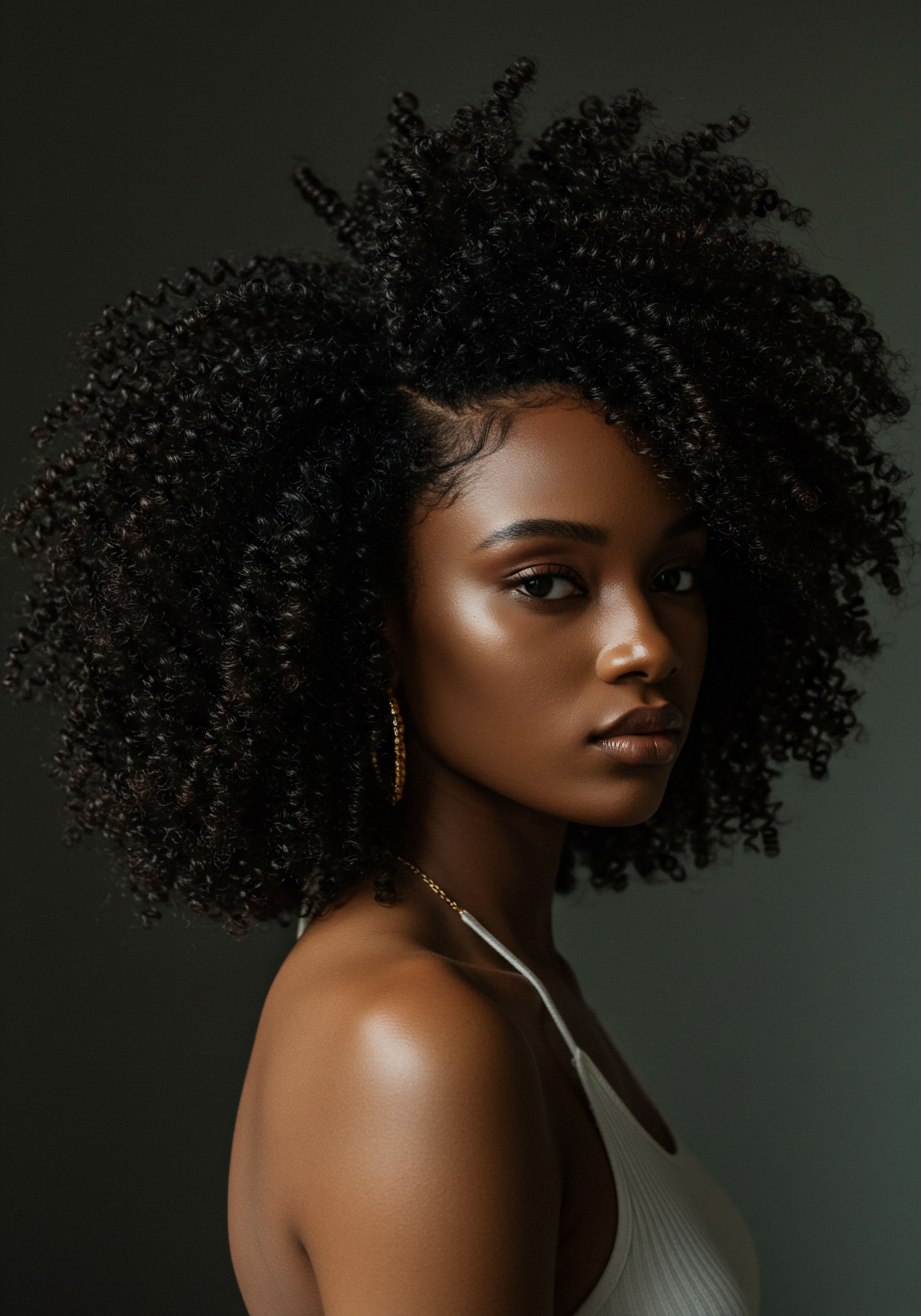
Roots
Have you ever held a single strand of spiral hair, perhaps after a gentle wash, and felt the whisper of generations within its coil? It is a subtle connection, a quiet recognition of the intricate beauty passed down through time. Before bottles lined our shelves, before laboratories distilled their elixirs, our ancestors tended to their hair with a wisdom born of intimate connection to their surroundings.
They understood the very fabric of their strands, the rhythms of growth, and the gentle touch required to preserve its vitality. This understanding, often woven into daily life, forms the bedrock of hair wellness that many seek today.
The journey into traditional hair care begins with a reverence for the hair itself. We often perceive hair as a simple adornment, yet its anatomical complexity rivals many other bodily structures. For textured hair, this complexity is particularly pronounced. Each spiral, each curl, carries a unique architectural blueprint, a testament to nature’s diverse designs.
The hair shaft, emerging from the scalp, is not merely a uniform cylinder; rather, it possesses an elliptical cross-section, which gives rise to its characteristic curl. This shape influences everything from how moisture travels along the strand to its inherent strength and susceptibility to damage.

Hair Anatomy and Physiology Specific to Textured Hair
At the heart of every hair strand lies the cortex, a dense layer of keratin proteins that dictates the hair’s strength and elasticity. Surrounding this is the cuticle, a protective outer layer composed of overlapping scales. In spiral hair, these cuticle scales tend to be more lifted than in straight hair, making it more prone to moisture loss and tangling. This structural difference demands a particular gentleness in handling and a consistent replenishment of hydration.
Below the cuticle and cortex lies the medulla, a central core, though not all hair types possess one. The precise arrangement of these layers, influenced by genetics, contributes to the distinctive qualities of each individual’s textured hair.
Understanding the unique architectural blueprint of spiral hair, from its elliptical cross-section to its lifted cuticle scales, is the foundational step in nurturing its wellness.
Beyond the visible strand, the hair follicle, nestled within the scalp, serves as the very genesis of hair. Its shape determines the hair’s curl pattern. A highly curved follicle yields tightly coiled strands, while a less curved one produces looser spirals.
The health of this follicle, sustained by proper blood circulation and nutrient delivery, directly impacts the strength and growth of the hair it produces. Traditional practices frequently centered on scalp health, recognizing it as the garden from which vibrant hair springs.
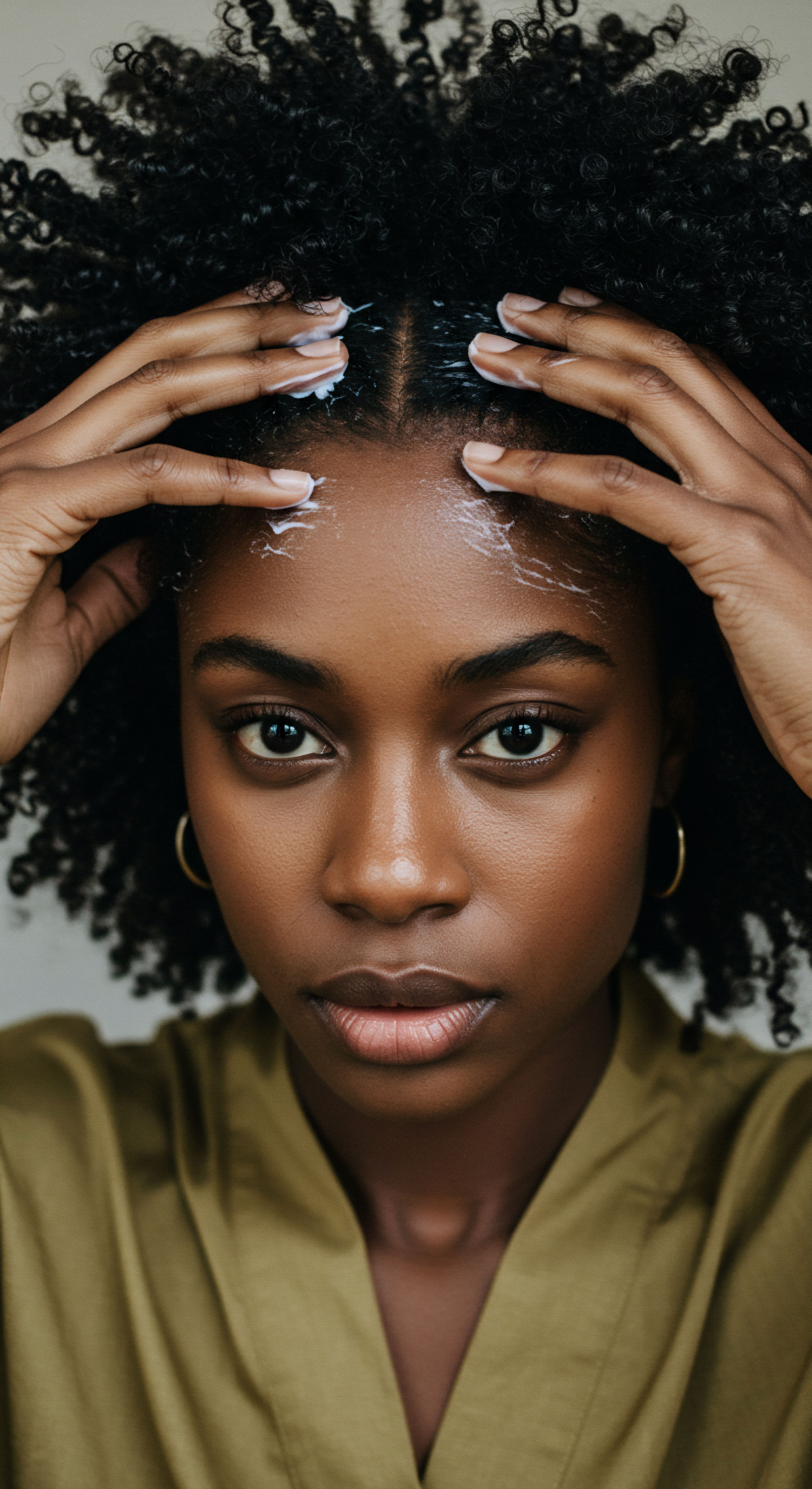
Textured Hair Classification Systems
While modern classification systems, such as those popularized by stylists, categorize hair by numbers and letters (e.g. 3A, 4C), traditional societies often possessed their own nuanced ways of describing hair, rooted in observation and cultural significance. These older classifications might not have used scientific jargon, but they often captured the essence of hair types based on appearance, behavior, and cultural styling implications. They spoke of hair that “drinks” moisture, hair that “holds” a style, or hair that “rebels” against manipulation, reflecting a deep, intuitive knowledge.
- Coil Patterns vary from loose waves to tight z-shaped kinks, each possessing distinct care requirements.
- Strand Density describes how many hair strands grow per square inch of scalp, influencing overall volume.
- Hair Porosity speaks to the cuticle’s ability to absorb and retain moisture, a key determinant of hydration strategies.
These descriptors, whether ancient or contemporary, serve as guides, not rigid boxes. They aid us in understanding our hair’s particular needs, allowing us to tailor care practices that honor its natural tendencies.

The Essential Lexicon of Textured Hair
To speak of spiral hair wellness is to speak a language rich with specific terms. Words like Co-Washing (cleansing with conditioner), Pre-Poo (pre-shampoo treatment), and LOC Method (liquid, oil, cream layering for moisture) have entered the contemporary lexicon. Yet, many traditional terms, often specific to various cultures, described practices and ingredients that performed similar functions. The practice of oiling, for instance, known by various names across Africa and the diaspora, aimed to seal moisture and provide protective coating, much like modern leave-in conditioners and oils.
Understanding these terms, both new and old, creates a shared space for learning and sharing. It bridges the wisdom of the past with the insights of the present, allowing for a comprehensive approach to textured hair wellness.

Hair Growth Cycles and Influencing Factors
Hair grows in a cyclical pattern ❉ anagen (growth), catagen (transition), and telogen (resting). For spiral hair, preserving length during the anagen phase often faces challenges from breakage due to its delicate structure. Traditional practices, through their emphasis on protective styling and gentle handling, sought to extend the anagen phase and minimize loss during the telogen phase.
Factors influencing hair growth extend beyond genetics to include diet, stress levels, and environmental exposure. Traditional communities often consumed diets rich in nutrient-dense foods, recognizing the internal connection to external vitality. They also practiced holistic wellness, which inherently supported healthy hair growth by reducing systemic stressors.

Ritual
As the sun rises, so too do the daily intentions for our hair. Stepping beyond the foundational understanding of our strands, we move into the realm of applied wisdom – the consistent, rhythmic practices that truly bring hair to life. These are the daily caresses, the weekly deep conditioners, the periodic protective styles that shield our hair from the elements and the rigors of life.
This section invites us to explore the practical expressions of traditional care, recognizing that true wellness often resides in the quiet, repeated acts of tenderness. It is about understanding not just what to do, but how to do it with intention and respect for our hair’s delicate needs.

Protective Styling Encyclopedia
For centuries, communities with spiral hair have mastered the art of protective styling. These styles, far from mere aesthetics, serve a profound purpose ❉ to shield the delicate ends of the hair, minimize manipulation, and reduce exposure to environmental stressors. Braids, twists, cornrows, and buns, often adorned with shells or beads, were not just beautiful; they were a strategic defense against breakage and tangling.
The longevity of these styles allowed for periods of minimal handling, giving the hair a chance to rest and retain moisture. For example, the Senegalese Twists, a style with roots in West Africa, involves twisting two strands of hair together, often with added extensions, to create a rope-like braid. This method not only offers length and volume but also significantly reduces daily manipulation of one’s own hair.
Similarly, Bantu Knots, a traditional Zulu hairstyle, involve twisting sections of hair into small, coiled buns that sit on the scalp. When unraveled, these knots reveal beautiful, defined curls, while also serving as an excellent protective style when worn.
Protective styles, deeply rooted in ancestral wisdom, offer more than visual appeal; they act as a strategic shield for delicate hair, minimizing daily manipulation and external stress.
A study published in the International Journal of Dermatology highlighted the significance of low-tension protective styles in maintaining hair length for individuals with Afro-textured hair. While specific historical data can be challenging to quantify, observational evidence from communities practicing consistent protective styling over generations points to remarkable length retention and reduced breakage. This suggests that the principles behind these traditional methods remain profoundly relevant in contemporary hair care.
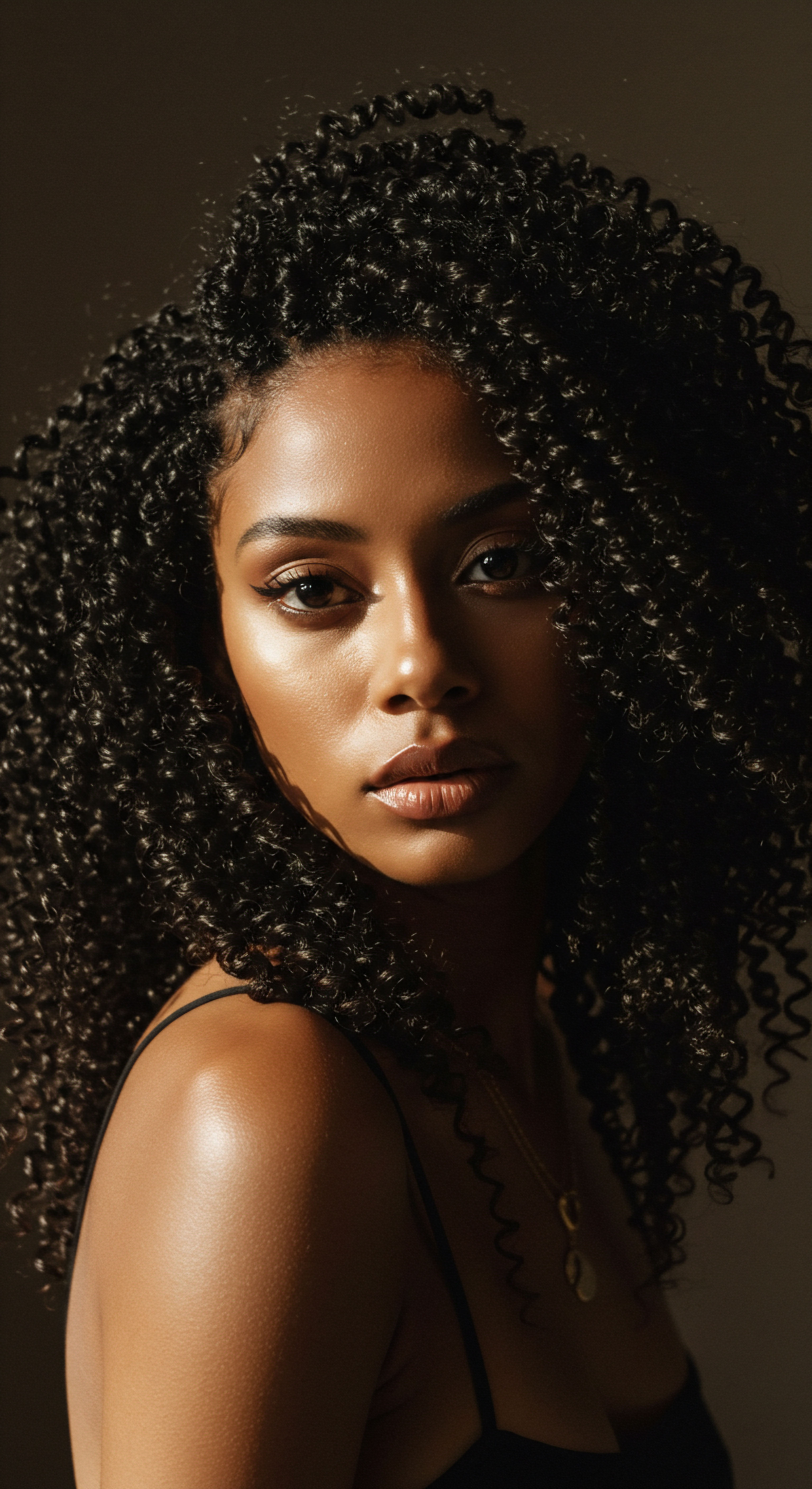
Natural Styling and Definition Techniques
Beyond protective styles, traditional practices also encompassed methods for defining and enhancing natural curl patterns without heat or harsh chemicals. Techniques like finger coiling, braiding, or twisting damp hair before allowing it to air dry were common. These methods encouraged the hair to clump and form defined spirals, minimizing frizz and enhancing the hair’s natural beauty. The emphasis was always on working with the hair’s inherent texture, rather than attempting to alter it.
The application of natural oils and butters, such as shea butter or coconut oil, often accompanied these styling methods, providing lubrication and moisture that helped to set the curls and reduce friction. These substances, readily available in many ancestral lands, formed the basis of conditioning and styling agents.
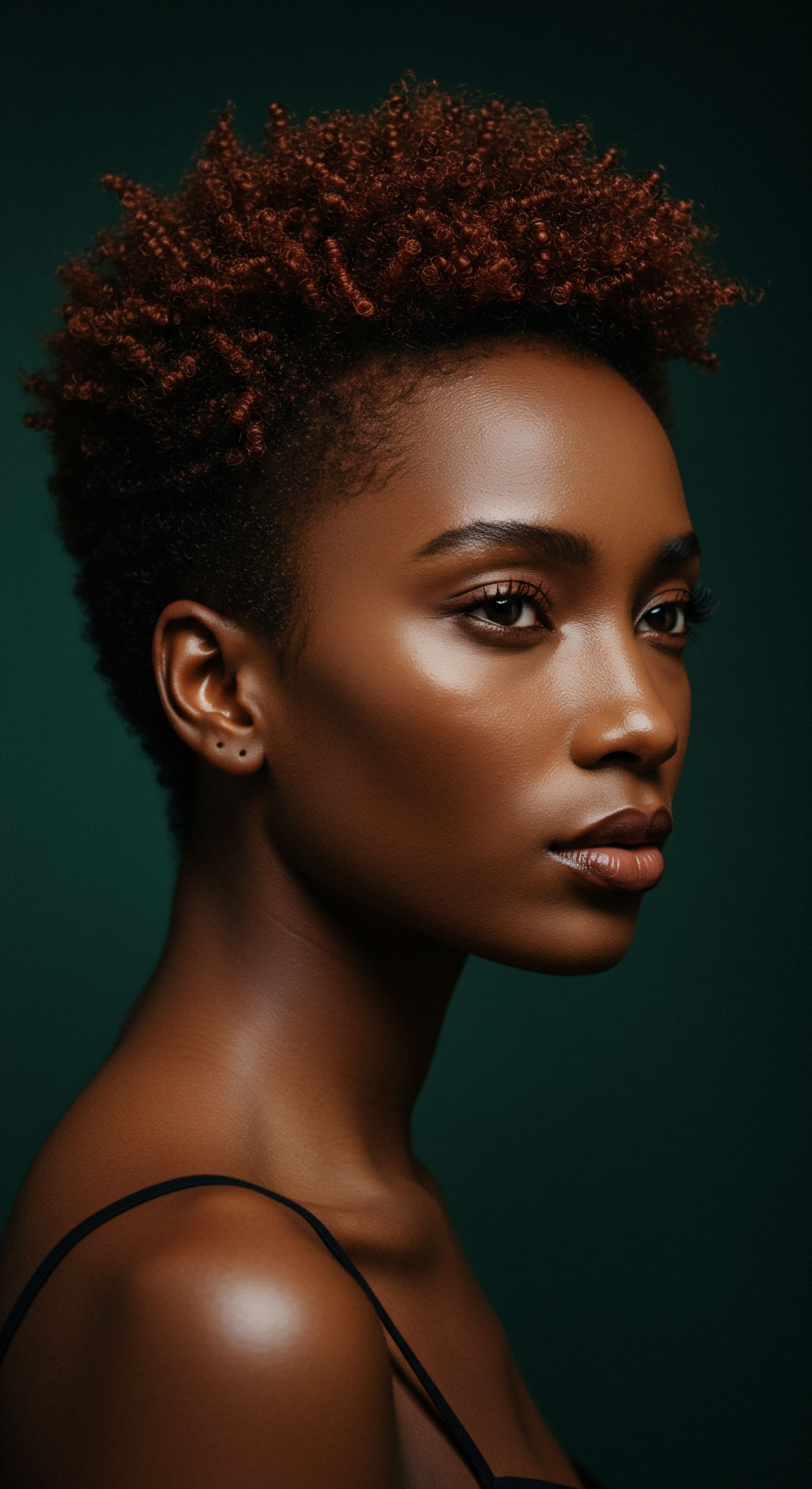
Wigs and Hair Extensions Mastery
The practice of adorning oneself with wigs and hair extensions is not a modern invention. Ancient Egyptians, for instance, used elaborate wigs made from human hair, plant fibers, and even wool, not only for aesthetic reasons but also for protection from the sun and as a symbol of status. These early forms of extensions served a similar protective function to contemporary weaves and braids, allowing the natural hair underneath to rest and grow.
The ingenuity in crafting these pieces, often involving intricate braiding or weaving techniques to secure them, speaks to a long-standing understanding of how to supplement and protect natural hair.
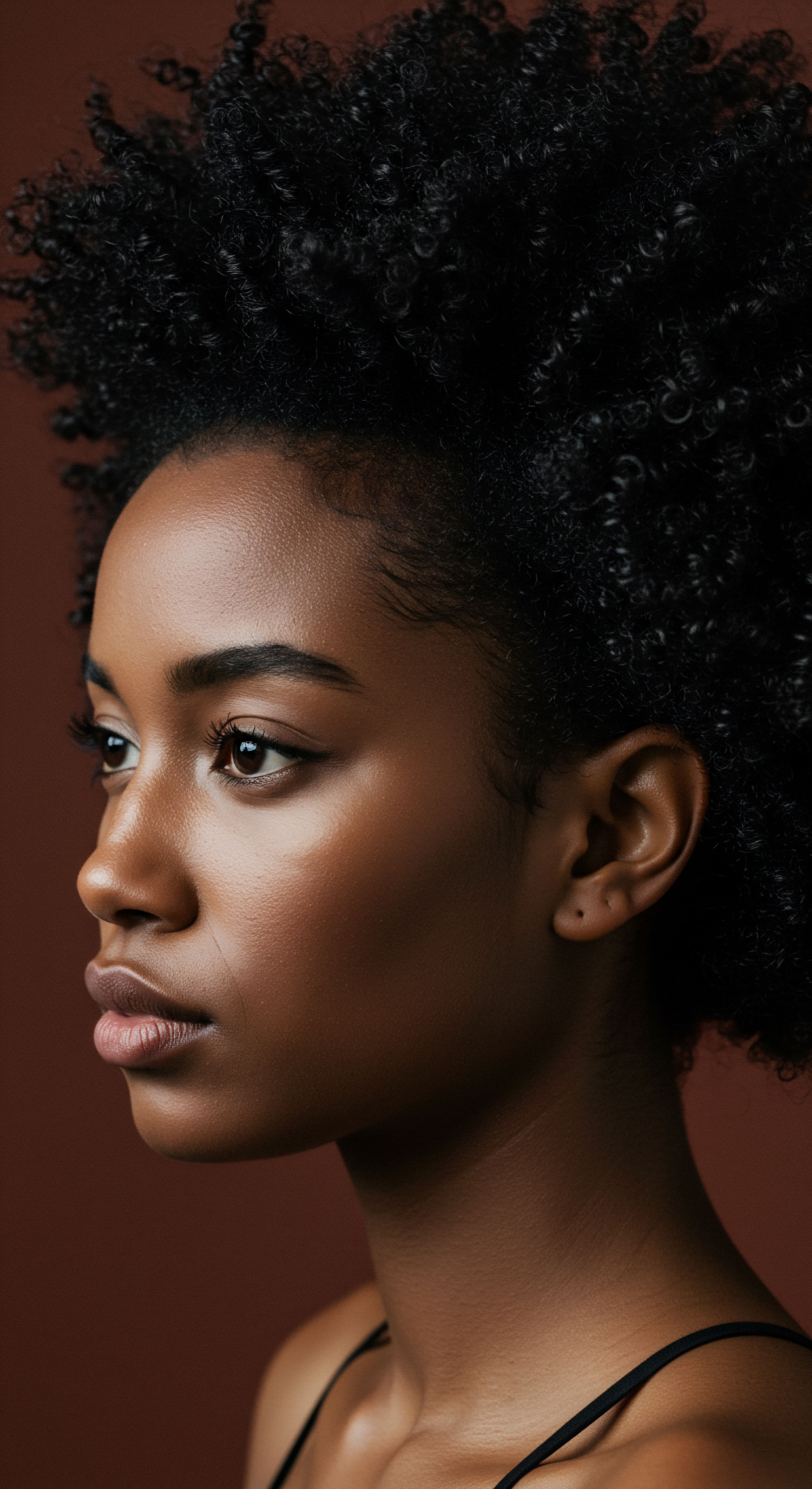
Heat Styling and Thermal Reconditioning
While traditional practices generally prioritized low-manipulation and air-drying, some cultures did employ methods of straightening or stretching hair, often involving natural elements or simple tools. These methods, however, were typically less harsh than modern chemical relaxers or high-heat styling tools. For example, some historical accounts mention the use of heated combs made from metal or bone, but these were used sparingly and with great care, often accompanied by protective oils.
The prevailing wisdom leaned towards preserving the hair’s natural integrity, recognizing the potential for damage from excessive heat. This cautious approach aligns with contemporary understanding of heat damage and the importance of heat protectants.

The Complete Textured Hair Toolkit
The tools of traditional hair care were often simple, yet profoundly effective. Wide-tooth combs, often carved from wood or bone, were essential for gentle detangling, minimizing breakage. Fingers were perhaps the most important tool, used for sectioning, twisting, and applying products with a tender touch. Natural fibers, like cotton or silk scarves, served as protective coverings for sleeping or during daily activities, preserving styles and preventing friction.
| Tool Wide-tooth comb (wood/bone) |
| Primary Function Gentle detangling, distributing product |
| Modern Parallel Plastic wide-tooth comb, detangling brush |
| Tool Fingers |
| Primary Function Sectioning, coiling, product application, gentle detangling |
| Modern Parallel Styling tools, hands-on application |
| Tool Natural fiber wraps (cotton/silk) |
| Primary Function Hair protection, moisture retention, style preservation |
| Modern Parallel Satin bonnets, silk scarves, pillowcases |
| Tool Natural oils/butters |
| Primary Function Conditioning, sealing moisture, shine |
| Modern Parallel Leave-in conditioners, hair serums, styling creams |
| Tool These tools, often simple, underscore the enduring principles of gentle care and protection. |
These tools, humble in their form, speak volumes about the care and respect afforded to hair. They remind us that effective hair care need not be complex or expensive, but rather mindful and consistent.

Relay
What deep currents flow beneath the surface of our hair care routines? Moving beyond the visible practices, we stand at the precipice of a more profound exploration, one that intertwines science, cultural legacy, and the intricate details of human connection. This section invites us to consider the less obvious, yet profoundly influential, dimensions of traditional hair wellness. It is a space where the wisdom of ancestors meets contemporary understanding, where the delicate interplay of biological, psychological, and social factors reveals itself, offering a truly multi-dimensional lens through which to view the health of our spiral strands.

Cultural Significance and Identity
Hair, particularly textured hair, has long held immense cultural significance across various societies. It is often more than just a biological appendage; it is a symbol of identity, status, spirituality, and community. In many African cultures, specific hairstyles could denote age, marital status, tribal affiliation, or even social standing. The communal act of hair braiding, for instance, was not merely a styling session; it was a powerful ritual of bonding, storytelling, and the transmission of cultural knowledge from one generation to the next.
This deep cultural connection often fostered a sense of pride and careful stewardship of one’s hair. The psychological impact of seeing hair as a valued aspect of one’s heritage undoubtedly contributed to consistent, gentle care, minimizing practices that could cause damage. The cultural context provided an intrinsic motivation for hair wellness that extended beyond mere aesthetics.

The Role of Scalp Health in Hair Longevity
Traditional practices often placed a significant emphasis on scalp health, recognizing it as the foundation for vibrant hair. Cleansing rituals, often using natural clays, plant extracts, or fermented grains, aimed to purify the scalp without stripping its natural oils. Scalp massages, a common practice across many cultures, were performed to stimulate blood flow, which in turn delivers essential nutrients to the hair follicles.
Consider the long-standing use of various herbal infusions for scalp treatments. For example, the traditional application of Neem Oil in parts of India and Africa, revered for its antimicrobial properties, addressed scalp conditions that could impede hair growth. While specific large-scale randomized controlled trials on the direct hair growth impact of these traditional scalp massages are limited, the biological premise is sound ❉ increased blood circulation supports follicular health.
A study in the Journal of Dermatological Treatment (2016) found that standardized scalp massage led to increased hair thickness in men, attributing this to stretching forces on dermal papilla cells. This contemporary research provides a scientific lens through which to appreciate the ancient wisdom of scalp manipulation for hair vitality.

Beyond Products The Power of Mindful Touch
Perhaps one of the most overlooked, yet profoundly effective, traditional practices is the concept of mindful touch. Before the advent of a vast array of hair products, the hands were the primary tools. This led to a heightened awareness of the hair’s texture, its tangles, and its needs. Detangling was a slow, deliberate process, often done with fingers or wide-tooth combs, section by section, to minimize breakage.
Mindful, gentle touch, a cornerstone of traditional hair care, often holds more sway over hair health than any product alone.
This gentle approach stands in stark contrast to the often rushed and aggressive handling that modern routines can sometimes encourage. The very act of slow, careful manipulation reduces mechanical stress on the hair shaft, preventing the micro-fractures that lead to breakage and hinder length retention. It cultivates a patient relationship with one’s hair, recognizing its delicate nature.

Are Traditional Practices Adaptable for Modern Living?
The principles underlying traditional hair practices are remarkably adaptable to contemporary lifestyles. While we may not have access to every specific plant or communal braiding circle, the core tenets remain universal ❉ gentleness, protection, hydration, and scalp wellness. We can select modern products that mirror the functions of traditional ingredients – using rich butters, natural oils, and gentle cleansers. We can adopt protective styles that fit our schedules and professional environments.
The essence lies in integrating the wisdom of the past into our present routines, not in a rigid replication. This means prioritizing deep conditioning, minimizing heat, and protecting hair during sleep.
Consider the historical use of hair greasing or oiling, a practice seen across many traditional societies. This was not simply for shine; it served to lubricate the hair shaft, reduce friction, and seal in moisture. In a climate where hair can dry quickly, this provided a barrier. Modern hair oils and serums perform a similar function, offering a contemporary iteration of an ancient protective ritual.
The transmission of knowledge also stands as a central pillar. In many traditional settings, hair care was learned through observation and direct instruction from elders. This direct mentorship ensured that nuanced techniques and generational wisdom were passed down effectively. While formal apprenticeships are less common today, the spirit of knowledge sharing persists through online communities, workshops, and intergenerational conversations within families.
- Understanding Hair’s Unique Properties allows for targeted care, respecting its delicate nature.
- Consistent Gentle Handling minimizes mechanical stress, preserving hair length and strength.
- Holistic Wellness, including diet and stress management, supports hair growth from within.
This integrated perspective, where cultural appreciation meets scientific understanding, offers a truly comprehensive approach to nurturing spiral hair health. It recognizes that hair wellness is not a singular pursuit, but a rich tapestry woven from history, biology, and daily devotion.

Reflection
As we step back from this exploration, a quiet truth settles upon us ❉ the quest for vibrant, healthy spiral hair is a timeless one, echoing through generations and across continents. The wisdom of our ancestors, steeped in observation, patience, and a deep respect for natural processes, continues to offer profound insights. It reminds us that the most effective care often lies not in complexity, but in consistency, in mindful touch, and in understanding the unique needs of our own strands. May this knowledge guide your hands and heart as you continue your personal journey with your remarkable hair.

References
- Aguh, Crystal, and Ginette Okoye. Fundamentals of Ethnic Hair ❉ The Dermatologist’s Guide to Black and Mixed Hair Care. Springer, 2017.
- Kim, Do-Heon, et al. “Standardized scalp massage results in increased hair thickness by inducing stretching forces to dermal papilla cells in human hair follicles.” Journal of Dermatological Treatment, vol. 27, no. 6, 2016, pp. 504-507.
- Gbedema, Teku, et al. “Ethnobotanical Survey of Medicinal Plants Used for Hair Care in Ghana.” Journal of Ethnopharmacology, vol. 265, 2021, pp. 113337.
- Burg, David. Hair ❉ A Cultural History. University Press of New England, 2006.
- Khumalo, Ncoza Dlova, et al. “Hair care practices ❉ A review of the scientific literature.” International Journal of Dermatology, vol. 59, no. 1, 2020, pp. 1-8.
- West, Carolyn M. “Hair, Power, and the Body ❉ A Cultural Analysis of Black Women’s Hair.” Feminist Studies, vol. 35, no. 1, 2009, pp. 2-25.